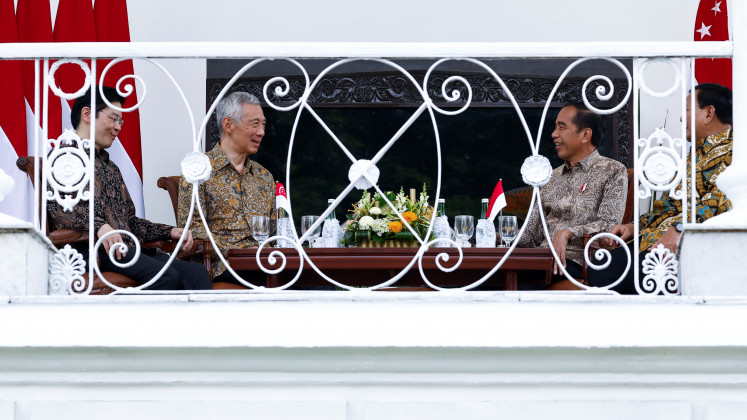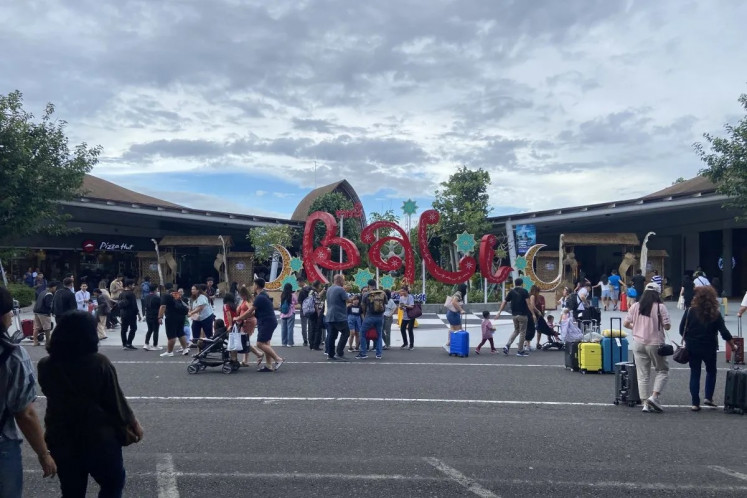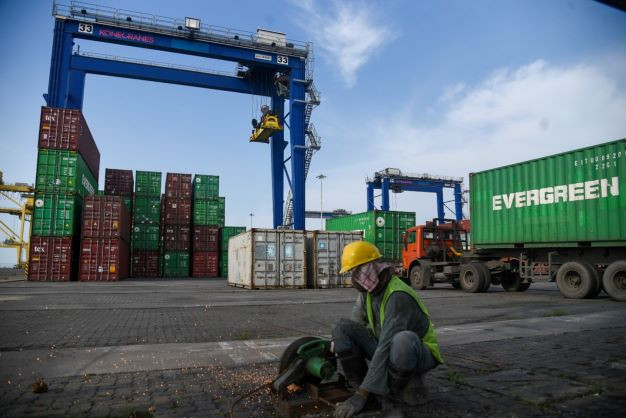Pathways to gods and beasts
Ministers of YogyakartaAdventurous culture seekers, come dip your toes in the waters of topeng and other traditional masks during a visit to Jakarta's playground in Ancol
Change Size

Ministers of Yogyakarta
Adventurous culture seekers, come dip your toes in the waters of topeng and other traditional masks during a visit to Jakarta's playground in Ancol.
Masked dance dramas are central to Asian performance traditions. Actors acting, enacting and re-enacting the panoply of roles from the great old stories of Indonesia are expected to bring those myths to life yet stay constant to the timeless characters. Masks help tell these timeless tales.
But masks help us humans understand other, even more profound parts of life. Dancers don masks, use music and movement to enter a trance state and become the Other: Evil Rangda comes alive in Bali, tigers burn bright in the forests of the night, vicious wild boars teach us about eating and being eaten in the inner reaches of Borneo. Masked actors or trance dancers embody these creatures - literally become them - and reach deep into our psyches to mediate the forces of nature that ultimately control our human existence.
The newly built North Art Space at Ancol is an unlikely place to tap into such depths on a bourgeois Sunday afternoon. Modern and spare, the simple two-story building looks promising, with its flexible lighting and cozy floor plan.
The mood is light, especially with a gaggle of young dancers downstairs learning the Balinese welcome dance. Anyone looking to curate a small concise exhibit would like the space.

With some 100 masks on display, "Beyond Faces" is an hour well spent if you are interested in exploring the basics of masks across Indonesia. But be warned: This is an exhibit for the adventurous culture seeker, not for the wandering tourist hoping to lap up some spoon-fed traditional culture.
With spotty documentation, scant translation out of Indonesian, and most of the material focused on naming the characters of the Hindu epics and Panji stories, dipping your toes in this exhibit can only be one aspect of the search for meaning through topeng.
Curators Agus Dermawan T. and Agustinus Prayitno ultimately fail to bring together under any common theme among the many masks on display. The mask collection shows a passion for collecting and some choice examples of masks from previous generations, particularly the gilt masks from Malang and the older Lenggaran masks.
The artifacts belong to Setia Dharma, a house of masks and puppetry based in Gianyar, Bali. Grouped around the gallery by region, we can easily see the Hindu epic influences, the variations on classic character in Malang, Lombok and Madura, and the completely unrelated Batak, Dayak and Papuan woven and carved sculptural images.

Anyone familiar with West Java topeng, wayang golek and Balinese dance dramas will encounter some familiar faces. But there are some older masks beautifully wrought: the Madurese masks with intricately carved bas-relief garlands framing each face, the Cirebon masks showing Chinese influence, and the hairy and jovial Kepatihan masks of central Java.
Despite the occluding descriptions, the culture seeker can find some interesting gems. One string of pearls is the variety of masks from different Javanese kingdoms, used to act out the Panji stories. The serene princess Dewi Mertosari from the Singosari kingdom is flat and refined. The windows to her soul are only tiny slits. (Panji stories are set in ancient Java and tell the tale of four kingdoms. The protagonist Panji searches for his lost love, which leads him into battle against hostile kings and to conquer many obstacles.)
A clear mystery were the apparently newer, glossy masks on display from Lombok. Predominantly yellow and bright red, with little paint or carving, these humorous faces all look produced by a single master. The polar opposite is a headdress from Papua. The basic size and shape of a football net carrier, tatted from dried grasses and decorated with thousands of tiny seashells and coconut hair, we can only wonder what dance and music brings such a creature to life.
Any exhibit of performance artifacts separated from their performance context tell less than half the story. The mask collection is decapitated, permanently separated from the artists who can bring them to life. Curators of performance art are now drawing more upon video to show the objects in real situations. Can these devoted curators and Setia Dharma find a dance student and an arts grant to present even more in the next exhibit?
If you are looking for a short course in masks and need an extra reason to explore Ancol, stop by North Art Space in the next two weeks. Your whetted appetite may take you to Setia Dharma next time you are wandering around Gianyar.
Photos by — Edith Johnson
BEYOND FACES
Until Dec. 13
North Art Space
Pasar Seni Ancol
Jl. Lodan Timur No 4
Tel: 021 6471 0319









